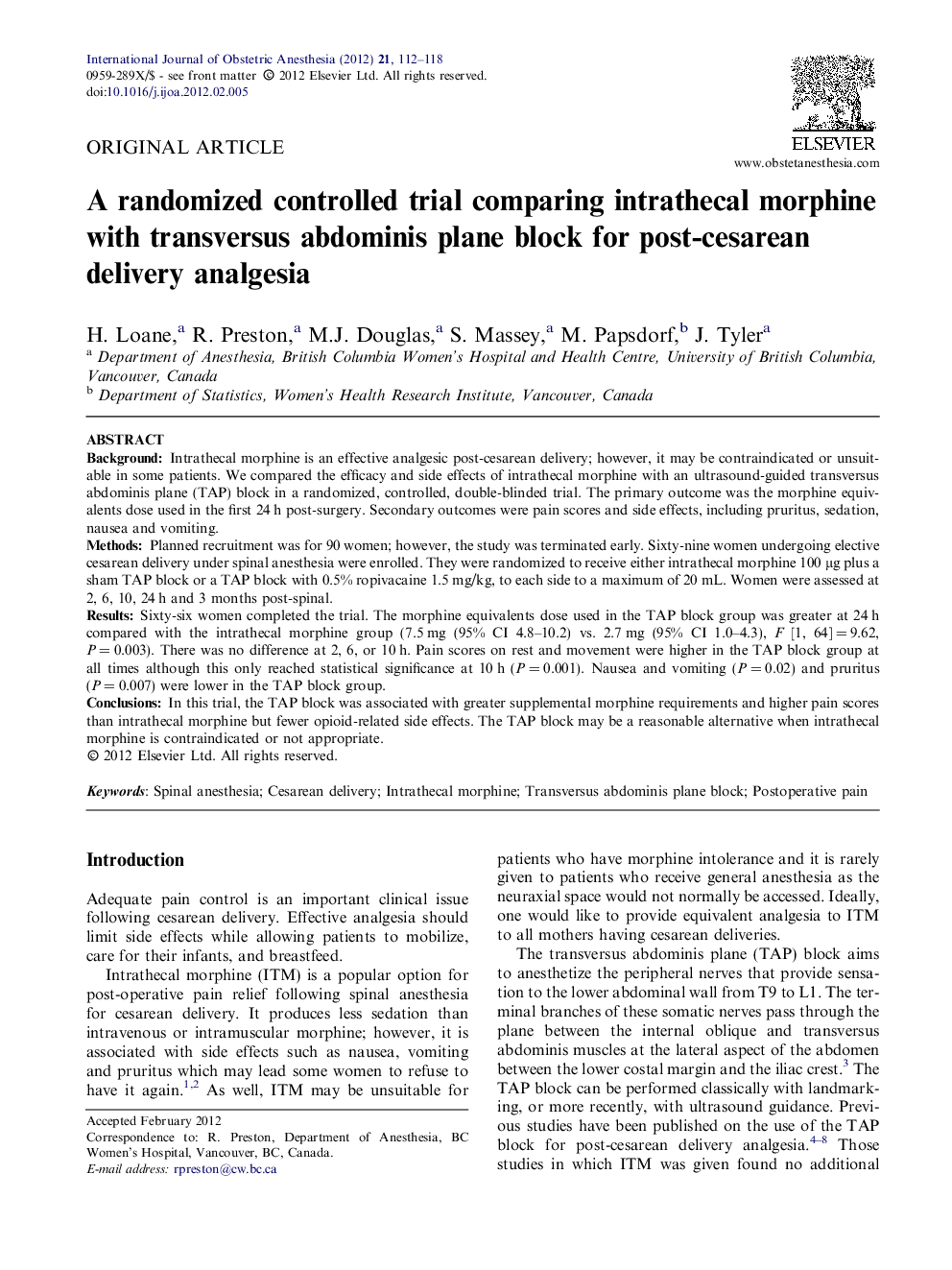| Article ID | Journal | Published Year | Pages | File Type |
|---|---|---|---|---|
| 2757715 | International Journal of Obstetric Anesthesia | 2012 | 7 Pages |
BackgroundIntrathecal morphine is an effective analgesic post-cesarean delivery; however, it may be contraindicated or unsuitable in some patients. We compared the efficacy and side effects of intrathecal morphine with an ultrasound-guided transversus abdominis plane (TAP) block in a randomized, controlled, double-blinded trial. The primary outcome was the morphine equivalents dose used in the first 24 h post-surgery. Secondary outcomes were pain scores and side effects, including pruritus, sedation, nausea and vomiting.MethodsPlanned recruitment was for 90 women; however, the study was terminated early. Sixty-nine women undergoing elective cesarean delivery under spinal anesthesia were enrolled. They were randomized to receive either intrathecal morphine 100 μg plus a sham TAP block or a TAP block with 0.5% ropivacaine 1.5 mg/kg, to each side to a maximum of 20 mL. Women were assessed at 2, 6, 10, 24 h and 3 months post-spinal.ResultsSixty-six women completed the trial. The morphine equivalents dose used in the TAP block group was greater at 24 h compared with the intrathecal morphine group (7.5 mg (95% CI 4.8–10.2) vs. 2.7 mg (95% CI 1.0–4.3), F [1, 64] = 9.62, P = 0.003). There was no difference at 2, 6, or 10 h. Pain scores on rest and movement were higher in the TAP block group at all times although this only reached statistical significance at 10 h (P = 0.001). Nausea and vomiting (P = 0.02) and pruritus (P = 0.007) were lower in the TAP block group.ConclusionsIn this trial, the TAP block was associated with greater supplemental morphine requirements and higher pain scores than intrathecal morphine but fewer opioid-related side effects. The TAP block may be a reasonable alternative when intrathecal morphine is contraindicated or not appropriate.
